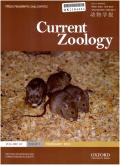基于现有的DNA条形码参考文库,大多数土壤和凋落物节肢动物是无法识别的
IF 2
2区 生物学
Q2 ZOOLOGY
引用次数: 1
摘要
我们远不了解生活在这个星球上的所有物种。了解生物多样性是一项艰巨的任务,需要时间和专业知识。考虑到物种的识别和划分问题,大多数群体都没有得到充分的研究。DNA条形码的出现,克服了识别物种的一些困难。它的局限性在于不完整的分类知识和缺乏针对如此多分类群的全面的DNA条形码文库。在此,我们评估了条形码技术在美国南部阿巴拉契亚山脉高度多样化的凋落叶群落中识别节肢动物的有效性。我们使用了三个参考数据库和几种自动分类方法对数据集包括几个节肢动物组。蜱螨、蜘蛛目、弹蛾目、鞘翅目、双翅目和膜翅目在不同的方法和数据库中表现不同。蜘蛛表现最好,在数据库中对物种和属水平的正确识别率约为50%。弹尾虫表现不佳,没有识别出种或属的条形码。其他组的表现差到一般,从3%(螨虫)到20%(甲虫)正确识别条形码到物种,但也有一些错误的识别。一般来说,基于bold的鉴定提供了最好的鉴定结果,但在除蜘蛛以外的所有情况下,性能都很差,只有不到五分之一的标本被正确地鉴定为属或种。我们的结果表明,土壤节肢动物的动物群仍然缺乏充分的文献记录,许多物种在DNA条形码库中没有代表。在将DNA条形码作为一种普遍适用的鉴定方法之前,我们需要更多的努力来完善我们的参考库。本文章由计算机程序翻译,如有差异,请以英文原文为准。
Most soil and litter arthropods are unidentifiable based on current DNA barcode reference libraries
We are far from knowing all species living on the planet. Understanding biodiversity is demanding and requires time and expertise. Most groups are understudied given problems of identifying and delimiting species. DNA barcoding emerged to overcome some of the difficulties in identifying species. Its limitations derive from incomplete taxonomic knowledge and the lack of comprehensive DNA barcode libraries for so many taxonomic groups. Here, we evaluate how useful barcoding is for identifying arthropods from highly diverse leaf litter communities in the southern Appalachian Mountains (USA). We used three reference databases and several automated classification methods on a data set including several arthropod groups. Acari, Araneae, Collembola, Coleoptera, Diptera, and Hymenoptera were well represented, showing different performances across methods and databases. Spiders performed the best, with correct identifications rates to species and genus levels of ~50% across databases. Springtails performed poorly, no barcodes were identified to species or genus. Other groups showed poor to mediocre performance, from around 3% (mites) to 20% (beetles) correctly identified barcodes to species, but also with some false identifications. In general, BOLD-based identification offered the best identification results but, in all cases except spiders, performance is poor, with less than a fifth of specimens correctly identified to genus or species. Our results indicate that the soil arthropod fauna is still insufficiently documented, with many species unrepresented in DNA barcode libraries. More effort toward integrative taxonomic characterization is needed to complete our reference libraries before we can rely on DNA barcoding as a universally applicable identification method.
求助全文
通过发布文献求助,成功后即可免费获取论文全文。
去求助
来源期刊

Current Zoology
Agricultural and Biological Sciences-Animal Science and Zoology
CiteScore
3.20
自引率
9.10%
发文量
111
审稿时长
6 weeks
期刊介绍:
About the Journal
Current Zoology (formerly Acta Zoologica Sinica, founded in 1935) is an open access, bimonthly, peer-reviewed international journal of zoology. It publishes review articles and research papers in the fields of ecology, evolution and behaviour.
Current Zoology is sponsored by Institute of Zoology, Chinese Academy of Sciences, along with the China Zoological Society.
 求助内容:
求助内容: 应助结果提醒方式:
应助结果提醒方式:


